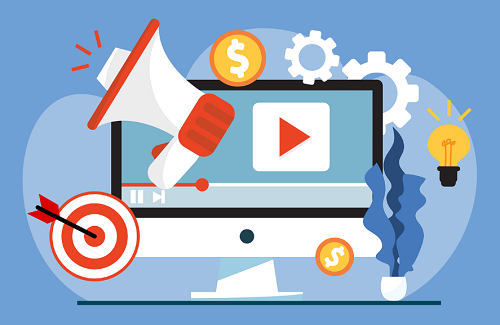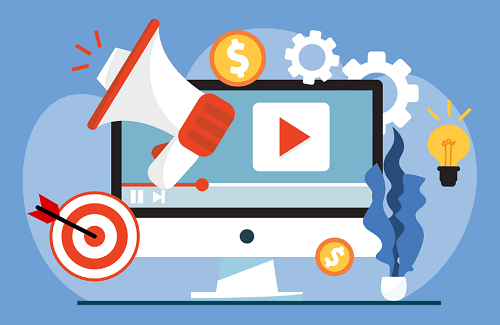


In the competitive world of affiliate marketing, your landing page is your most valuable asset. It's the bridge between your potential customer and the affiliate offer you are promoting. A high-converting landing page can be the difference between a profitable campaign and a wasted effort. This guide will walk you through the essential steps to create landing pages that not only attract visitors but also convert them into leads and customers.
The first step in creating a high-converting landing page is understanding your audience. Who are they? What are their demographics, interests, and pain points? The more you know about your target audience, the better you can tailor your landing page to meet their needs.
Creating detailed buyer personas can help you visualize your ideal customer. A buyer persona is a semi-fictional representation of your ideal customer based on market research and real data about your existing customers. Include details like age, gender, income, hobbies, and challenges they face. This will guide your content and design decisions, ensuring they resonate with your audience.
Your Unique Selling Proposition (USP) is what sets your offer apart from the competition. It’s a clear statement that describes the benefit of your offer, how you solve your customer’s needs, and what distinguishes you from the competition. Make sure your USP is prominently displayed on your landing page.
While features are important, it’s the benefits that sell. Focus on how your product or service can improve your customer’s life. Benefits are the emotional and tangible results your customers get from using your product or service.
A clean and uncluttered design helps guide your visitor’s focus. Avoid overwhelming your visitors with too much information or too many options. Keep the design simple, with plenty of white space, making it easy for visitors to find the key information.
Use size, colour, and placement to create a visual hierarchy that guides the visitor through the page. Your headline, subheadlines, and call-to-action (CTA) should stand out clearly. Use contrasting colours to draw attention to important elements like your CTA buttons.
Ensure your landing page looks great and functions well on mobile devices. With more people browsing on their phones, a mobile-responsive design is crucial. Test your landing page on multiple devices to ensure a smooth user experience across all platforms.
Your headline is the first thing visitors see, so make it count. It should grab attention and communicate the main benefit of your offer in a clear and compelling way. Keep it concise and to the point.
Use subheadlines to support the main headline and keep the reader engaged. They should provide additional information and guide the visitor through your content seamlessly.
Your body copy should be persuasive and focused on the reader’s needs. Address their pain points and explain how your offer can solve their problems. Use bullet points and short paragraphs to make the text easy to scan.
A clear and compelling CTA is crucial for conversions. Use action-oriented language that tells the visitor exactly what you want them to do, such as “Download Now” or “Get Started Today.” Make sure your CTA stands out visually on the page.
High-quality, relevant images can enhance your message and make your landing page more appealing. Use images that reflect the benefits of your offer and resonate with your audience.
Videos can significantly increase engagement and conversions. A short video explaining your offer or showing it in action can help visitors understand your product better and make a decision faster.
Including trust signals like testimonials, reviews, badges, and guarantees can build trust and credibility. Showcasing positive feedback from real users can reassure visitors and encourage them to convert.
A/B testing is essential for optimizing your landing page. Test different elements like headlines, images, and CTAs to see what performs best. Continuously optimize based on the results to improve conversion rates.
A slow-loading page can turn visitors away before they even see your offer. Ensure your landing page loads quickly by optimizing images, using a reliable hosting service, and minimizing code.
Basic SEO practices can help your landing page rank better in search engines, increasing organic traffic. Use relevant keywords in your headlines, body copy, and meta tags.
Social proof, such as user reviews and testimonials, can significantly boost your credibility. Include quotes from satisfied customers, and if possible, add photos or videos of them using your product.
Establish authority by showcasing endorsements from influencers or media mentions. This can help build trust with your audience and make them more likely to convert.
Set up conversion tracking to measure the performance of your landing page. Tools like Google Analytics can help you track key metrics like conversion rates, bounce rates, and average time on page.
Heatmaps and other tools can help you understand how users interact with your landing page. This information can provide insights into which elements are working and which need improvement.
Common Mistakes to Avoid
Overloading the page with too much information.
Using vague or weak CTAs.
Neglecting mobile optimization.
Ignoring the importance of A/B testing.
Resources and Tools
Landing Page Builders: Markethive, Unbounce, Leadpages, Instapage.
Analytics Tools: Google Analytics, Hotjar.
Creating a high-converting landing page for affiliate offers involves understanding your audience, crafting a compelling value proposition, designing an effective layout, and optimizing for conversions. By following these steps, you can create landing pages that not only attract visitors but also convert them into leads and customers.
Disclaimer: This article is provided for informational purposes only. It is not offered or intended to be used as legal, tax, investment, financial, or other advice.
Featured Image - Pixabay
